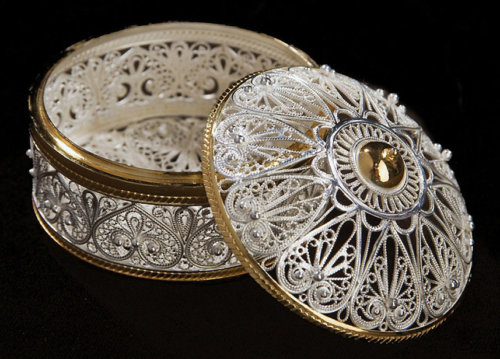
The wheel of human history, turning, sweeps away not only cities and civilizations, but also many everyday trifles. Vintage accessories that two hundred years ago were basic necessities are today even unknown to most people. And those accessories on which they spent a fortune are gathering dust on museum shelves. The last few centuries have made especially strong changes in our way of life and the “arsenal” of women today has become much poorer. Let’s see what little things the ladies have lost from their everyday life in the recent, from the point of view of world history, time.


Vintage accessories: Fan
The most famous of all antique accessories, the fan is always associated in our understanding with high society, balls and noble ladies of the Pushkin era. However, the history of this little thing is much more interesting and goes back about 3 thousand centuries. At different times, the fan (or fan), with the same functionality, carried a different semantic load: it was a symbol of power among the Assyrians, a sign of nobility among the ancient Egyptians, the embodiment of male and female principles in Japan and China.

In the European culture of the Middle Ages and later, he became an irreplaceable subject of seduction. The special “language of the fan” made it possible not only to encourage or discourage a gentleman, but also to appoint, for example, him a date for a certain time in a certain place. In addition, thanks to the paintings and jewelry inserts, the fans became real works of art. The cost of the individual was so great that they were accepted in banks as collateral.

Portbouquet
This case for fresh flowers was in vogue in the 18th-19th centuries. With its help, a small bouquet could be carried in hands without dirtying the outfit, or pinned to the bodice of a dress. In addition, with the help of sliding legs-stands, the accessory quickly turned into a miniature vase. Some models could even be filled with water. Now this little thing can be found, modified, in a wedding dress, well, in museums, in the form of jewelry delights of the past.

Chatelain
This extremely rational accessory has been popular since the Middle Ages and up to the 20th century. It was a special clip, to which various useful little things were attached on chains: a wallet, keys, a watch, a pencil, a thimble, etc. This design was worn on the belt. This was a salvation for the ladies who did not have a women’s handbag at that time. By the way, due to the high functionality of this little thing, it was worn not only by nobles, but also by commoners, both men and women. The beauty and value of Chatelain’s materials was a sign of belonging to high society.


Carne (Ball Book)
The balls were special events. Young debutantes usually connected their hopes and hopes with them. And so that forgetful young ladies did not confuse the order of the gentlemen, they made notes in a special booklet. Usually it was a dainty thing with a precious binding and a small pencil. With the help of a chain, it was attached to the wrist or dress. Ballroom books appeared in the 18th century in Vienna and were used until the second half of the 20th, gaining popularity both in Europe and in the USA.


Blokholovka
As you know, fleas in the old days were an unpleasant inevitability for people of all classes. A special gadget, fashionable in the 15th-16th centuries and later, was a small spinning insect trap. A fragrant bait was placed inside – a cloth soaked in honey, blood or resin. Fleas crawled in and stuck. Such a device could be placed inside the hair, under clothes, or placed next to the bed. By the way, at the same time, another accessory was popular, which is now known under the same name. It was a whole skin of a fur-bearing animal (marten or sable) with a head decoratively made in the form of jewelry. There is an opinion that the fur could lure annoying parasites onto itself, but there is no confirmation of this fact. Probably, it was just a decoration fashionable for its era.

Vinegar or snuff vial
Another fact that we know about ancient times is that the ladies at the balls constantly fainted. At the same time, they were necessarily “given to sniff the salt.” This is indeed the case. Usually the bottle contained a crystalline ammonium salt with a pungent odor. The bottles themselves were decorated in accordance with the taste and capabilities of the owner. The vinegar box served the same purpose; it contained cotton wool dipped in vinegar or ammonia.

Burdal
This item of intimate hygiene for ladies of the 17th-18th centuries was an attribute necessary on trips or at long-term events, and was, in fact, a “day vase”. Now it could be called a “duck”, although it served for the administration of natural necessities while standing. This was possible thanks to the special shape and comfortable handle. Usually this piece was made of earthenware or porcelain and covered with beautiful paintings, sometimes with a playful content. Servants most often helped to slip a water bottle under the lady’s skirts.
Snuff bottle







